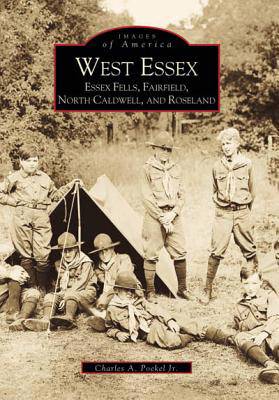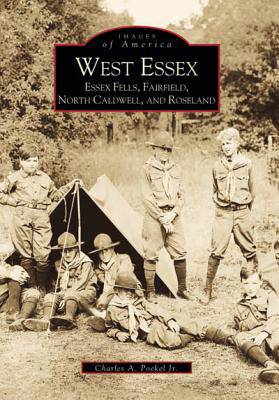
- Afhalen na 1 uur in een winkel met voorraad
- Gratis thuislevering in België vanaf € 30
- Ruim aanbod met 7 miljoen producten
- Afhalen na 1 uur in een winkel met voorraad
- Gratis thuislevering in België vanaf € 30
- Ruim aanbod met 7 miljoen producten
Zoeken
West Essex, Essex Fells, Fairfield, North Caldwell, and Roseland
Charles A Poekel Jr
€ 34,95
+ 69 punten
Omschrijving
In 1702, a tract of land known as Horseneck was purchased by descendants of the Puritans from the Hackensack Indians for 130 pounds. The area, which consisted of over 13,500 acres of land, was located on the second Watchung Mountain from New York City. With conflicts between the Native American deeds and the grants from the East Jersey Proprietors who
represented the Crown, land disputes ensued and resulted in the Horseneck Riots in 1744. These riots occurred when a prominent Horseneck farmer, Samuel Baldwin, was arrested and thrown into the Newark Jail. Within a few hours, 300 angry Horseneck farmers marched into the jail and freed him. This represented the first successful resistance against British tyranny, more than 30 years before Lexington and Concord. From this territory and from these early settlers were born the four communities of West Essex--Essex Fells, Fairfield, North Caldwell, and Roseland. From the Dutch origins of Fairfield to the planned suburban development of Essex Fells to the farms and estates of North Caldwell and Roseland, West Essex provides a photographic glimpse of the area, featuring over 200 images, many of which
have never before been published. The impact of several important individuals is also noted, including Peter Van Ness, Willis H. Carrier, Madame Ernestine Schumann-Heink, and Henry Becker.
represented the Crown, land disputes ensued and resulted in the Horseneck Riots in 1744. These riots occurred when a prominent Horseneck farmer, Samuel Baldwin, was arrested and thrown into the Newark Jail. Within a few hours, 300 angry Horseneck farmers marched into the jail and freed him. This represented the first successful resistance against British tyranny, more than 30 years before Lexington and Concord. From this territory and from these early settlers were born the four communities of West Essex--Essex Fells, Fairfield, North Caldwell, and Roseland. From the Dutch origins of Fairfield to the planned suburban development of Essex Fells to the farms and estates of North Caldwell and Roseland, West Essex provides a photographic glimpse of the area, featuring over 200 images, many of which
have never before been published. The impact of several important individuals is also noted, including Peter Van Ness, Willis H. Carrier, Madame Ernestine Schumann-Heink, and Henry Becker.
Specificaties
Betrokkenen
- Auteur(s):
- Uitgeverij:
Inhoud
- Aantal bladzijden:
- 128
- Taal:
- Engels
- Reeks:
Eigenschappen
- Productcode (EAN):
- 9780738501413
- Verschijningsdatum:
- 27/09/1999
- Uitvoering:
- Paperback
- Formaat:
- Trade paperback (VS)
- Afmetingen:
- 163 mm x 231 mm
- Gewicht:
- 308 g

Alleen bij Standaard Boekhandel
+ 69 punten op je klantenkaart van Standaard Boekhandel
Beoordelingen
We publiceren alleen reviews die voldoen aan de voorwaarden voor reviews. Bekijk onze voorwaarden voor reviews.








